| Zarafasaura Temporal range: Late Cretaceous, | |
|---|---|
 | |
| Mounted skeleton (above), Wyoming Dinosaur Center | |
| Scientific classification | |
| Domain: | Eukaryota |
| Kingdom: | Animalia |
| Phylum: | Chordata |
| Class: | Reptilia |
| Superorder: | †Sauropterygia |
| Order: | †Plesiosauria |
| Family: | †Elasmosauridae |
| Genus: | †Zarafasaura Vincent et al., 2011 |
| Species: | †Z. oceanis |
| Binomial name | |
| †Zarafasaura oceanis Vincent et al., 2011 | |
Zarafasaura is an extinct genus of elasmosaurid known from the Oulad Abdoun Basin of Morocco.[1] As a relatively small elasmosaur, it would have measured around 3–4 metres (9.8–13.1 ft) long and weighed about 100 kilograms (220 lb).[2][3]
Discovery
Zarafasaura was first named by Peggy Vincent, Nathalie Bardet, Xabier Pereda Suberbiola, Baâdi Bouya, Mbarek Amaghzaz and Saïd Meslouh in 2011 and the type species is Zarafasaura oceanis. The generic name is derived from zarafa (زرافة), Arabic for "giraffe" (it refers to the name given by the local population to the plesiosaurs found in the phosphates) and saurus, Greek for "lizard". The specific name is derived from oceanis, Latin for "daughter of the sea".[1]
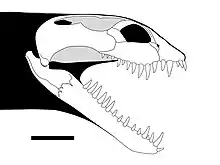
The holotype of Zarafasaura, OCP-DEK/GE 315, consists of an articulated incomplete dorsoventrally crushed skull and mandible and from the paratype OCP-DEK/GE 456, a complete mandible. It was collected in the Sidi Daoui area, from the Upper CIII level of the upper Cretaceous (latest Maastrichtian stage) Phosphates of Morocco.[1] In 2013, a second specimen, WDC CMC-01, was found to have a more complete skull with previously unknown postcranial elements such as the forefins, hindfins, vertebrae, pectoral and pelvic material.[4]
See also
References
- 1 2 3 Peggy Vincent; Nathalie Bardet; Xabier Pereda Suberbiola; Baâdi Bouya; Mbarek Amaghzaz; Saïd Meslouh (2011). "Zarafasaura oceanis, a new elasmosaurid (Reptilia: Sauropterygia) from the Maastrichtian Phosphates of Morocco and the palaeobiogeography of latest Cretaceous plesiosaurs". Gondwana Research. 19 (4): 1062–1073. Bibcode:2011GondR..19.1062V. doi:10.1016/j.gr.2010.10.005.
- ↑ Cooper, S.L.A.; Marson, K.J.; Smith, R.E.; Martill, D. (2022). "Contrasting preservation in pycnodont fishes reveals first record of regurgitalites from the Upper Cretaceous (Maastrichtian) Moroccan phosphate deposits". Cretaceous Research. 131 (4). 105111. doi:10.1016/j.cretres.2021.105111.
- ↑ Paul, Gregory S. (2022). The Princeton Field Guide to Mesozoic Sea Reptiles. Princeton University Press. p. 116. doi:10.1515/9780691241456. ISBN 9780691193809.
- ↑ Lomax, Dean R.; Wahl, William R. (2013). "A new specimen of the elasmosaurid plesiosaur Zarafasaura oceanis from the Upper Cretaceous (Maastrichtian) of Morocco" (PDF). Paludicola. 9 (2): 97–109. S2CID 204842778.

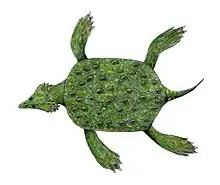
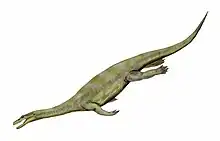
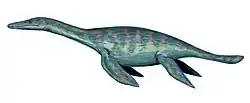

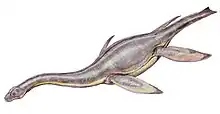

.png.webp)